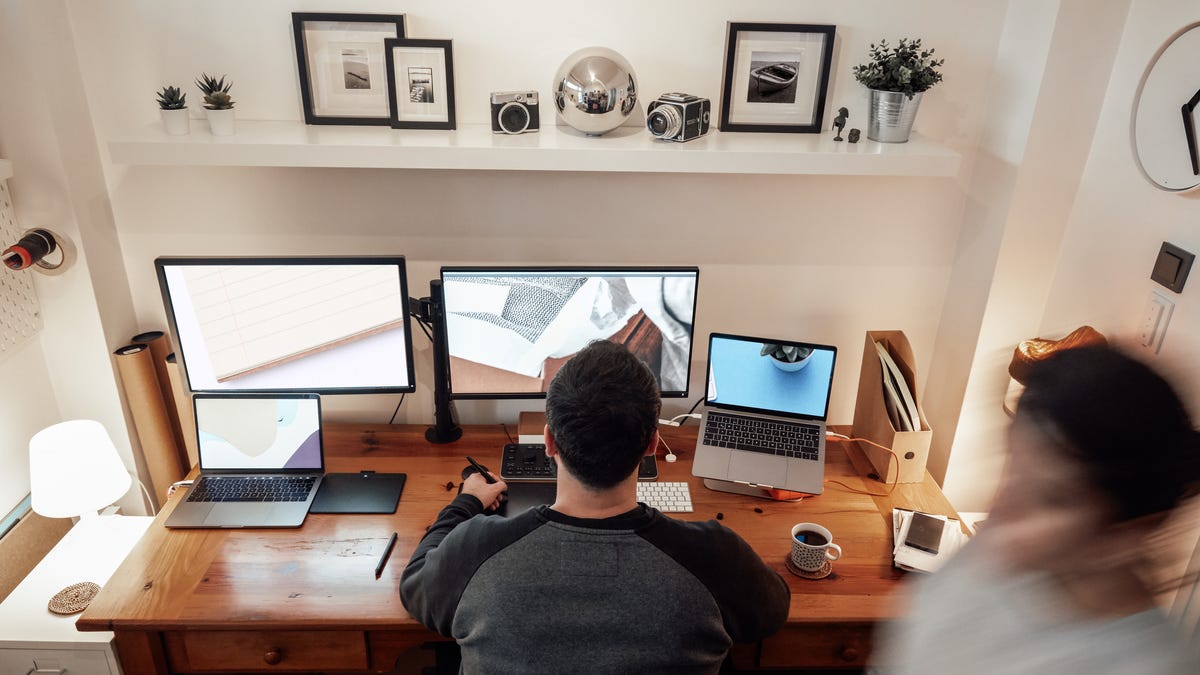How to choose the right monitor layout for work
My first and best suggestion is that you take a good, long look at your workflow and ask yourself the following questions:
Do I need more vertical or horizontal space? This will help determine several things. First, if vertical space is vital, you can eliminate both ultrawide setups and multi-monitor setups that don’t include at least one portrait-mode display.
If maximum horizontal space is most important to you, then the ultrawide category is very likely your best bet from a cost and efficiency perspective. If you require a mix of both, then a hybrid landscape/portrait multi-monitor setup or a single big-screen display is your best bet.
How many monitors can my system support? It’s absolutely vital to investigate this before attempting any major changes to your monitor layout. If the answer for your system is one, you’re going to have to stick with either a single ultrawide or a single big-screen display, assuming your system can support 4K resolutions for the latter. If you have the option to connect multiple monitors, then your choices are far more varied.
How much desk space do I have? This applies to both the width and depth of your desk. Wider desks may be able to easily accommodate big-screen and dual or even triple-screen setups, but they may not have the depth needed for a curved ultrawide. Similarly, deeper desks can fit an ultrawide with ease while they may struggle with the extra width required by some triple-screen configs.
Also: Best standing desks for WFH
Your best bet is to carefully go over the dimensions of your prospective displays (with and without stands) and see which would fit best within your available desk space.
How much will I need to spend on stands, mounts, or arms for my monitor(s)? Simply put, the larger or more creative your setup gets, the more likely it is you’ll need to buy aftermarket mounting options. Some of these can get quite pricey, especially if you’re looking for options with gas-assisted arms capable of moving the monitors attached to them vertically, as well horizontally. Even some wall mounts designed for 65-inch+ televisions can fail due to the massive leverage induced by the forward edges of their sharply curved display.
If you want to save cash, look for monitors that include stands that will suit all of your needs, out of the box. Failing that, consider monitor risers that can add height to make existing stands more adaptable, or experiment with a hybrid approach that uses both default stands and wall or desk-mounted arms.





Pingback: Medicijnen bestellen zonder recept bij Benu apotheek vervanger gevestigd in Amsterdam
Pingback: ติดตั้ง ais fiber
Pingback: astro pink delivery
Pingback: browning auto 5